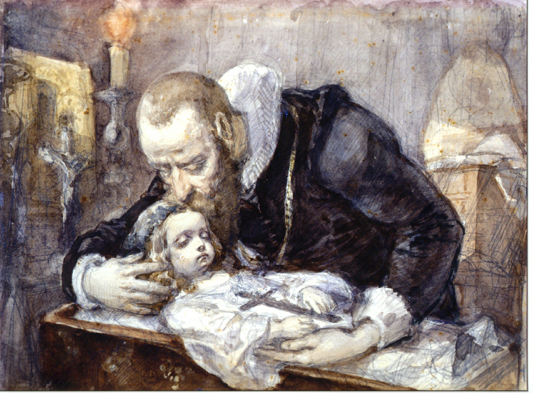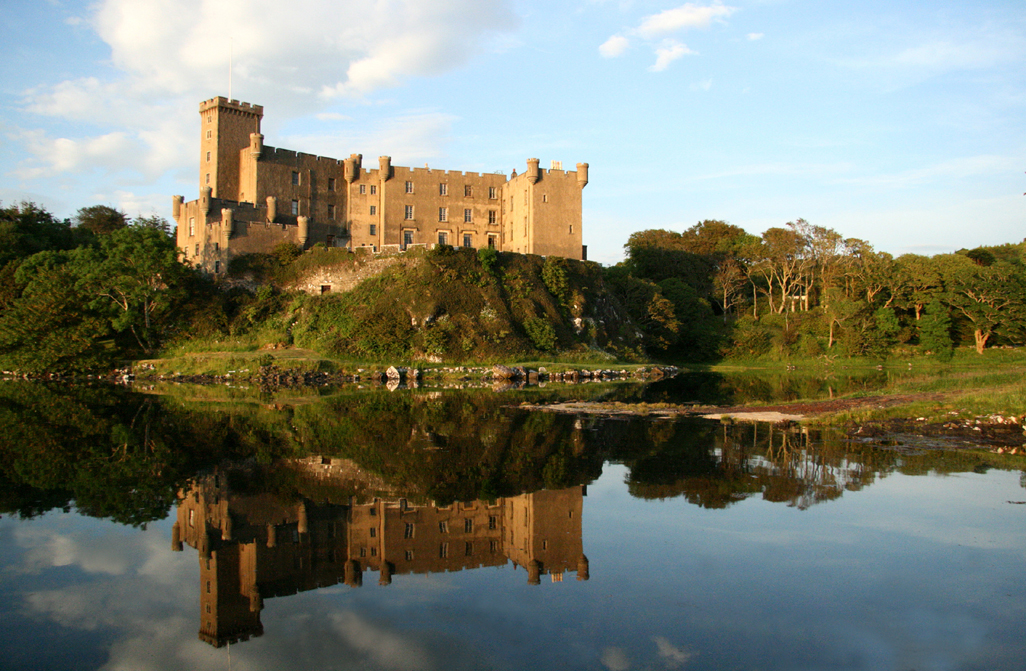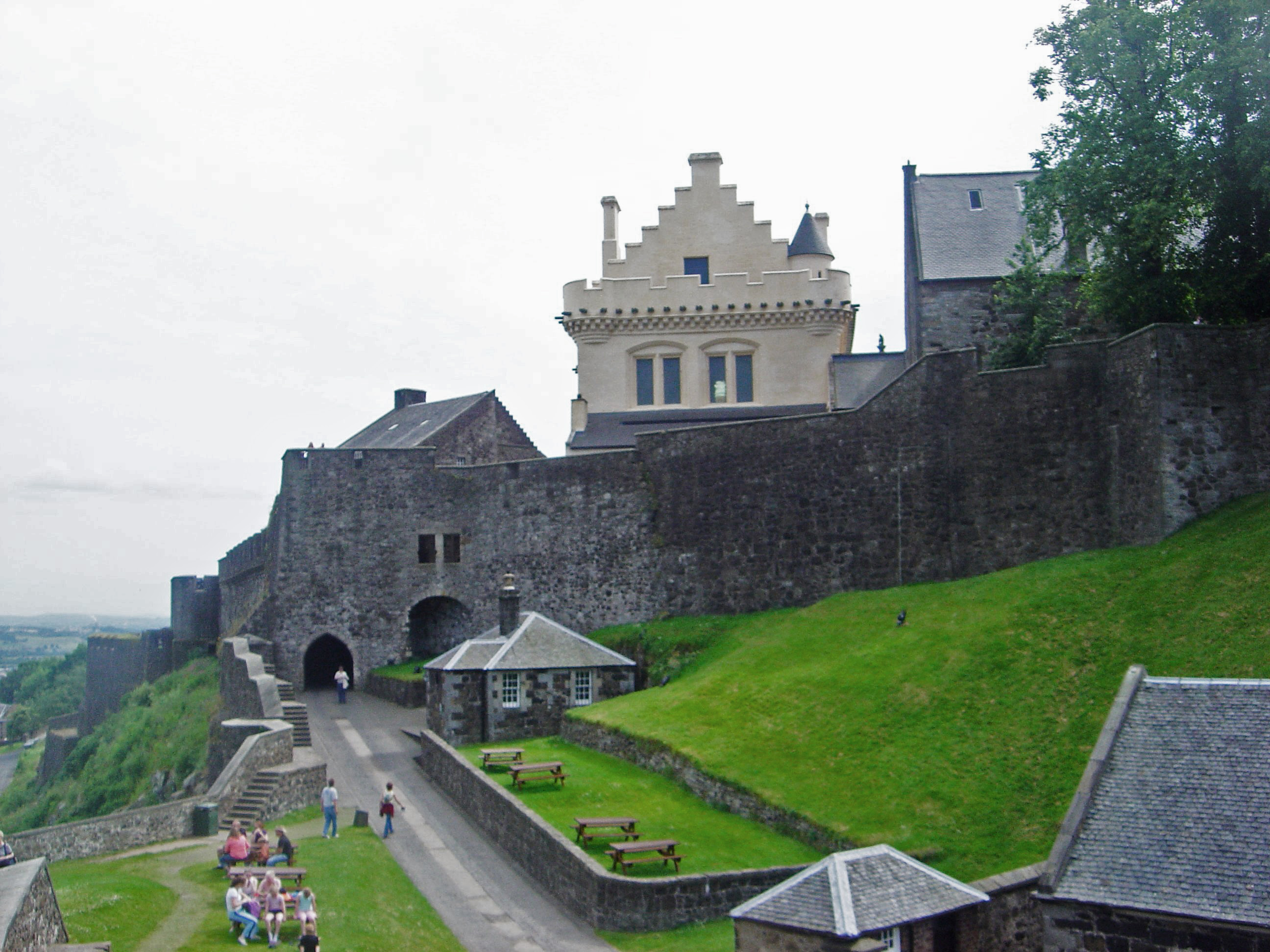|
Piobaireachd
Pibroch, or is an art music genre associated primarily with the Scottish Highlands that is characterised by extended compositions with a melodic theme and elaborate formal variations. Strictly meaning "piping" in Scottish Gaelic, has for some four centuries been music of the Great Highland Bagpipe. Music of a similar nature, pre-dating the adoption of the Highland pipes, has historically been played on the wire-strung Gaelic harp () and later on the Scottish fiddle, and this form is undergoing a revival. A more general term is ( gd, ceòl mòr in reformed spelling or in unreformed spelling), meaning the "great music", to distinguish this complex extended art-music from the more popular Scottish music such as dances, reels, marches and strathspeys, which are called or "little music". Etymology The Gaelic word literally means 'piping' or 'act of piping'. The word is derived from ('pipes') via ('piper') plus the abstract forming suffix . In Gaelic, literally refers to a ... [...More Info...] [...Related Items...] OR: [Wikipedia] [Google] [Baidu] |
Canntaireachd
Canntaireachd (; ) is the ancient method of teaching, learning and memorizing '' Piobaireachd'' (also spelt ''Pibroch''), a type of music primarily played on the Great Highland bagpipe. In the canntairached method of instruction, the teacher sings or hums the tune to the pupil, sometimes using specific syllables which signify the sounds to be produced by the bagpipe. History It appears that written staff notation began to come into use for bagpiping in the late 1700s or early 1800s. Seumas MacNeill, founder of The College of Piping, puts the date at 1803; The Piobaireachd Society holds that this occurred earlier, in the latter half of the eighteenth century. Prior to that time, instructors had to use other methods for teaching bagpipe tunes to students: by singing in canntaireachd, by playing the pipes for the student, or most likely a combination of both methods. The Campbell (Nether Lorn) canntaireachd Efforts were made to translate the vocal tradition into written form. The ... [...More Info...] [...Related Items...] OR: [Wikipedia] [Google] [Baidu] |
Angus MacKay (piper)
Angus MacKay (10 September 1813 – 21 March 1859) was a Scottish bagpipe player and the first Piper to the Sovereign. He wrote collections of pibroch and ceol beag written in staff notation, which became the basis for standardised settings of music which had previously been shared by singing of canntaireachd. Life Early life He was born on 10 September 1813, to Margaret and John MacKay. His three brothers played the pipes, and his father, John MacKay of Raasay, was a leading composer and player. John MacKay had been taught by the MacCrimmons of Skye, and as well as his own sons taught other players including John Bàn Mackenzie, Angus Macpherson, and Donald Cameron. After considering emigrating to America, the family moved to Drummond Castle near Crieff in 1823, as Angus' father John became piper to Peter Drummond-Burrell, 22nd Baron Willoughby de Eresby. Piper He became piper first to Sarah, wife of Peter Drummond-Burrell, and then successively to Davidson of Tulloch and Ca ... [...More Info...] [...Related Items...] OR: [Wikipedia] [Google] [Baidu] |
Lament
A lament or lamentation is a passionate expression of grief, often in music, poetry, or song form. The grief is most often born of regret, or mourning. Laments can also be expressed in a verbal manner in which participants lament about something that they regret or someone that they have lost, and they are usually accompanied by wailing, moaning and/or crying. Laments constitute some of the oldest forms of writing, and examples exist across human cultures. History Many of the oldest and most lasting poems in human history have been laments. The Lament for Sumer and Ur dates back at least 4000 years to ancient Sumer, the world's first urban civilization. Laments are present in both the ''Iliad'' and the ''Odyssey'', and laments continued to be sung in elegiacs accompanied by the aulos in classical and Hellenistic Greece. Elements of laments appear in ''Beowulf'', in the Hindu Vedas, and in ancient Near Eastern religious texts. They are included in the Mesopotamian City ... [...More Info...] [...Related Items...] OR: [Wikipedia] [Google] [Baidu] |
Clan MacLeod
Clan MacLeod (; gd, Clann Mac Leòid ) is a Highland Scottish clan associated with the Isle of Skye. There are two main branches of the clan: the MacLeods of Harris and Dunvegan, whose chief is MacLeod of MacLeod, are known in Gaelic as ' ("seed of Tormod"); the Clan MacLeod of Lewis and Raasay, whose chief is MacLeod of The Lewes ( gd, Mac Ghille Chaluim), are known in Gaelic as ' ("seed of Torcall"). Both branches claim descent from Leòd, who lived in the 13th century. Today, Clan MacLeod of The Lewes, Clan MacLeod of Raasay, and Clan MacLeod are represented by "Associated Clan MacLeod Societies", and the chiefs of the three clans. The association is made up of ten national societies across the world including: Australia, Canada, England, France, Germany, New Zealand, Scotland, South Africa, Switzerland, and the United States. History Origins The surname MacLeod means 'son of Leod'. The name Leod is an Anglicization of the Scottish Gaelic name Leòd, which is thought t ... [...More Info...] [...Related Items...] OR: [Wikipedia] [Google] [Baidu] |
Oban
Oban ( ; ' in Scottish Gaelic meaning ''The Little Bay'') is a resort town within the Argyll and Bute council area of Scotland. Despite its small size, it is the largest town between Helensburgh and Fort William. During the tourist season, the town can have a temporary population of up to over 24,000 people. Oban occupies a setting in the Firth of Lorn. The bay forms a near perfect horseshoe, protected by the island of Kerrera; and beyond Kerrera, the Isle of Mull. To the north, is the long low island of Lismore and the mountains of Morvern and Ardgour. Pre-history and archaeology Humans have used the site where Oban now stands since at least Mesolithic times, as evidenced by archaeological remains of cave dwellers found in the town. Just outside the town, stands Dunollie Castle, on a site that overlooks the main entrance to the bay and has been fortified since the Bronze Age. Just to the north of Oban, at Dunstaffnage, excavations in 2010, by Argyll Archaeology, in ... [...More Info...] [...Related Items...] OR: [Wikipedia] [Google] [Baidu] |
Inverness
Inverness (; from the gd, Inbhir Nis , meaning "Mouth of the River Ness"; sco, Innerness) is a city in the Scottish Highlands. It is the administrative centre for The Highland Council and is regarded as the capital of the Highlands. Historically it served as the county town of the county of Inverness-shire. Inverness lies near two important battle sites: the 11th-century battle of Blàr nam Fèinne against Norway which took place on the Aird, and the 18th century Battle of Culloden which took place on Culloden Moor. It is the northernmost city in the United Kingdom and lies within the Great Glen (Gleann Mòr) at its northeastern extremity where the River Ness enters the Beauly Firth. At the latest, a settlement was established by the 6th century with the first royal charter being granted by Dabíd mac Maíl Choluim ( King David I) in the 12th century. Inverness and Inverness-shire are closely linked to various influential clans, including Clan Mackintosh, Clan Frase ... [...More Info...] [...Related Items...] OR: [Wikipedia] [Google] [Baidu] |
Masonic Lodge
A Masonic lodge, often termed a private lodge or constituent lodge, is the basic organisational unit of Freemasonry. It is also commonly used as a term for a building in which such a unit meets. Every new lodge must be warranted or chartered by a Grand Lodge, but is subject to its direction only in enforcing the published constitution of the jurisdiction. By exception the three surviving lodges that formed the world's first known grand lodge in London (now merged into the United Grand Lodge of England) have the unique privilege to operate as ''time immemorial'', i.e., without such warrant; only one other lodge operates without a warrant – the Grand Stewards' Lodge in London, although it is not also entitled to the "time immemorial" title. A Freemason is generally entitled to visit any lodge in any jurisdiction (i.e., under any Grand Lodge) in amity with his own. In some jurisdictions this privilege is restricted to Master Masons (that is, Freemasons who have attained the ... [...More Info...] [...Related Items...] OR: [Wikipedia] [Google] [Baidu] |
Highland Society Of London
The Highland Society of London is a charity registered in England and Wales, with "the view of establishing and supporting schools in the Highlands and in the Northern parts of Great Britain, for relieving distressed Highlanders at a distance from their native homes, for preserving the antiquities and rescuing from oblivion the valuable remains of Celtic literature, and for promoting the improvement and general welfare of the Northern parts of Great Britain". History The Society was founded in 1778 by Highland gentlemen resident in London and was incorporated by Act of Parliament on 21 May 1816. Within a year of its foundation, its members had come to include a number of notable Scots:Sir John Sinclair of Ulbster Bt., ''An Account of the Highland Society of London'' (London, 1813)Appendix II/ref> * Lord Macleod * Sir Harry Monro * Hon Archibald Fraser of Lovat * Archibald Macdonald * Hon. General Fraser (President) * Lord Adam Gordon * The Earl of Eglinton * John Macpherso ... [...More Info...] [...Related Items...] OR: [Wikipedia] [Google] [Baidu] |
Battle Of Culloden
The Battle of Culloden (; gd, Blàr Chùil Lodair) was the final confrontation of the Jacobite rising of 1745. On 16 April 1746, the Jacobite Army (1745), Jacobite army of Charles Edward Stuart was decisively defeated by a Kingdom of Great Britain, British government force under Prince William, Duke of Cumberland, Prince William Augustus, Duke of Cumberland, on Drummossie Moor near Inverness in the Scottish Highlands. It was the last pitched battle fought on British soil. Charles was the eldest son of James Francis Edward Stuart, James Stuart, the exiled House of Stuart, Stuart claimant to the British throne. Believing there was support for a Stuart restoration in both Scotland and England, he landed in Scotland in July 1745: raising an army of Scots Jacobitism, Jacobite supporters, he took Edinburgh by September, and defeated a British government force at Battle of Prestonpans, Prestonpans. The government recalled 12,000 troops from the Continent to deal with the rising: a Jac ... [...More Info...] [...Related Items...] OR: [Wikipedia] [Google] [Baidu] |
Henry Christmas
Henry Christmas (1811 – March 10, 1868), at the end of his life going by the surname Noel-Fearn, was an English clergyman, a man of letters and editor of periodicals, known also as a numismatist. Life Born in London in 1811, he was the only son of Robert Noble Christmas of Taunton, by Jane, daughter of Samuel Fearn. He was educated at St John's College, Cambridge, and graduated B.A. in 1837, M.A. 1840. He was ordained in 1837, and after serving several curacies was in 1841 appointed librarian and secretary of Sion College, holding the office till 1848. From 1840 to 1843 and from 1854 to 1858 Christmas edited the ''Church of England Quarterly Review''. He also edited '' The Churchman'' (1840–3), the '' British Churchman'' (1845–8), and the ''Literary Gazette'' (1859–60). He was for some years lecturer at St Peter's Church, Cornhill, and later filled the curacy of Garlickhithe. He was also for some time Sunday evening preacher at St. Mildred's in the Poultry. Christmas w ... [...More Info...] [...Related Items...] OR: [Wikipedia] [Google] [Baidu] |
James IV Of Scotland
James IV (17 March 1473 – 9 September 1513) was King of Scotland from 11 June 1488 until his death at the Battle of Flodden in 1513. He inherited the throne at the age of fifteen on the death of his father, James III, at the Battle of Sauchieburn, following a rebellion in which the younger James was the figurehead of the rebels. James IV is generally regarded as the most successful of the Stewart monarchs. He was responsible for a major expansion of the Scottish royal navy, which included the founding of two royal dockyards and the acquisition or construction of 38 ships, including the '' Michael'', the largest warship of its time.T. Christopher Smout, ''Scotland and the Sea'' (Edinburgh: Rowman and Littlefield, 1992), , p. 45. James was a patron of the arts and took an active interest in the law, literature and science, even personally experimenting in dentistry and bloodletting. With his patronage the printing press came to Scotland, and the Royal College of Surgeons ... [...More Info...] [...Related Items...] OR: [Wikipedia] [Google] [Baidu] |






.jpg)
